Kindred's 2023 Best Cities for Black Families Awards
These are Kindred's top picks for places where Black families can find community, celebrate culture, and build generational legacies.
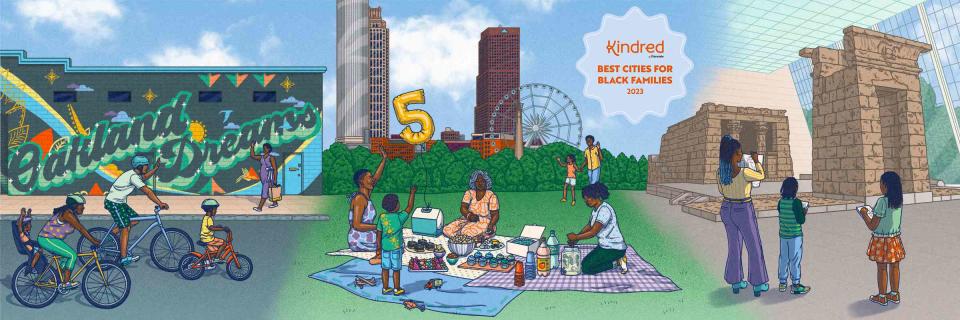
Eliana Rodgers for Kindred By Parents
Fact checked by Karen Cilli
Anyone raising a family has a list of things they look for when deciding on a safe and happy place to call home. While great schools and general safety top nearly every family’s list, for Black families, the list of needs and nice-to-haves also includes wealth-building opportunities, environmental safety, education, health equity, and representation in community and culture. While these items should be considered in the overall makeup of any great city, Black families have historically been driven into communities where such factors aren’t a given. Post-Reconstruction era policies and practices like redlining are examples of the kind of discrimination that has positioned a bevy of Black folks in places where equitable living isn’t as plausible. But as times change, more options have become available.
There are many lists that rank the best cities for families across the U.S., but few have considered what it really means to be Black and thrive in America from our perspective. So, Kindred by Parents worked to find the 2023 Best Cities for Black Families, considering all of the needs and nice-to-haves, with a few personal thoughts from our expert panel of Black judges.
Best Cities Overall
The best overall cities for Black families to live in are the places that offer substantial Black community and representative cultural offerings, good public and higher education options, solid wealth-building opportunities, and environmental and health equity.
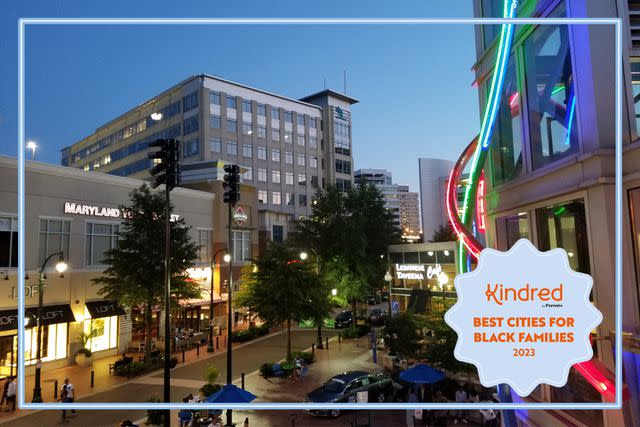
Brian Keith Lorraine / Getty Images
Silver Spring, Maryland
A Washington, D.C. suburb, Silver Spring, Maryland, has clean and safe outdoor spaces, inclusive cultural programming, great property value, and a well-represented Black population. Silver Spring’s earliest known Black neighborhood was founded in 1853, although it wasn’t until the 1960s that the city became a more equitable place for Black families as it sought to welcome Black homeowners.
Today, the city boasts racial diversity as no race or ethnic group overwhelmingly represents its majority. Niche.com grades Silver Spring as an A+ based on its ethnic and economic diversity. According to their report, 77% of residents also say they feel a sense of community. Thirty-three percent of residents hold a master's degree or higher; the median household income is over $90,000, and the median income for families who have a Black head of household is over $61,000. A 2018 report even listed Silver Spring as one of the few American cities where Black boys progress as well as their white counterparts in adulthood.
Niche also gave Silver Spring an A for its public education system and it received a high ranking in WalletHub’s list of the most educated cities in America. There, hospitals are slightly more prevalent than they are throughout the U.S. and the Black maternal mortality rate is 28.5 per 100,000 live births, making it a moderately better place to give birth than many others in the country.
James Little, an award-winning artist and educator at Art Students League of New York, says that access to resources is high on his list of places he’d consider top-tier for Black families.
“Black families need good schools, great public facilities, affordable housing, and high-paying jobs,” he says.
Atlanta, Georgia
Atlanta showed up as best for culture and wealth building; however, the Black American Mecca scored low in the areas of safety and health equity.
New York, New York
New York had a higher safety score overall but fared low in spaces with tight-knit Black communities.
San Francisco, California
San Francisco scored high in many of the same categories as Silver Spring, and Niche ranks it as the second-best place to live for young professionals in America, with an overall grade of A+. But the judges felt it lacked community and Black culture.
Best for Wealth Building
In this area, our methodology considered how easy it is to build—and maintain—generational wealth. A 2021 report found that 83% of Americans experiencing three consecutive generations of poverty are Black. For us, building generational wealth isn’t just about earning money; it’s about repairing decades of systemic damage and ensuring that our children continue healing. As such, when choosing the best city for wealth building, we considered factors such as the effects of inflation, housing markets, median household income, and the likelihood of financial discrimination, as measured by the ability to get home loans and small business loans.
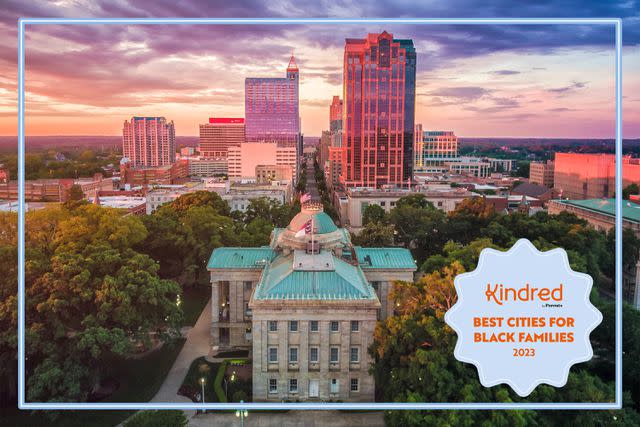
Michael Robson / Visit Raleigh
Raleigh, North Carolina
A member of North Carolina's Triangle region, Raleigh has long boasted great property value and generational wealth-building opportunities for Black families. It is one of the earliest cities Black folks settled post-Civil War. According to the National Park Service, the city was a center for advancement and opportunity for Black Americans immediately following the War, and that tradition continues today.
Raleigh has a 12% poverty rate with a median household income of about $73,000. In 2022, Stacker reported Raleigh's Black homeownership rate at 43.1%. While significant gaps still exist in Black homeownership, the city ranks number 136 highest among all metros. Axios noted a 3.9% jump in Black homeowners in Raleigh from 2019 to 2021, while Black homeownership in the U.S. overall jumped by just 2%. Homeownership has long been considered the most common way to build generational wealth; thus, a city showing such significant growth in that area lands a top spot on our rankings.
Atlanta, Georgia
Atlanta also showed a spike in Black homeownership in the same Axios report with a 4.6% climb.
Tonya Rapley of My Fab Finance has experienced life in North Carolina, New York City, Los Angeles, and Atlanta. She says Atlanta provided her with the best mix of everything.
“My first choice was based on occupational opportunities that allow for advancement and salary growth coupled with a relatively affordable housing market and affordable cost of living,” she says.
St. Louis, Missouri
St. Louis was another city to look out for with a 4.1% increase in Black homeownership according to Axios.
Best for Community and Culture
Studies have shown that happiness is directly related to the quality of the relationships and communities we can build. Here we considered the ease of building community and access to cultural resources. We looked into how easily Black families can connect with others and establish kinship, social networks, and childcare villages. In leisure, we looked for cities with access to free or low-cost museums, music venues, or other open forums and places that give nods to cultural representation.
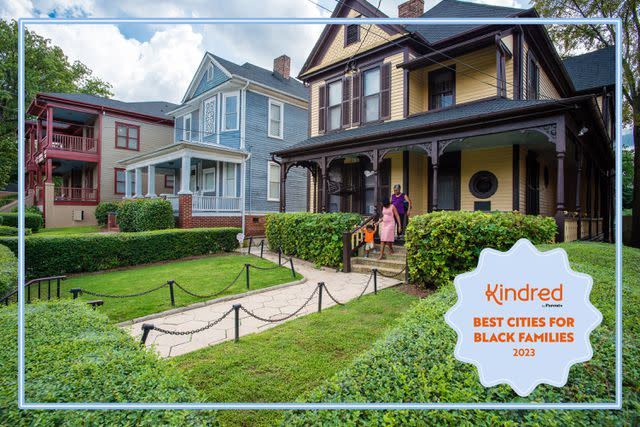
James Duckworth / Courtesy of ACVB / AtlantaPhotos.com
Atlanta, Georgia
It’s no surprise that Atlanta, a city known as the hub for Black American culture, snagged a spot as the best city for community and culture. A key player in the Civil Rights Movement and hometown of one of its biggest leaders, Martin Luther King Jr., Atlanta is steeped in cultural legacy. It’s also a major spot for landmarks, museums, and history. And when it comes to community-building, the city has four HBCUs that all work toward ingratiating themselves into the community, among other key goals.
Dr. Joy Harden Bradford, founder of Therapy for Black Girls, made Atlanta her top pick for the best overall city.
“I chose Atlanta because I think it encompasses many of the attributes that make a city a good place for a Black family, including the ability to build community, opportunities for career growth, lots of green space, and cultural activities,” she says.
Atlanta and its suburbs are chock full of museums and cultural attractions, including those that provide Black representation and history, some even Black-owned like The King Center, Hammonds House Museum, and National Center for Civil and Human Rights. America’s first Black-owned radio station was based in Atlanta from 1949 through 1968, playing music, Civil Rights speeches, and providing relevant news and information for the social justice movement.
With a rich culture like that, steeped in community, it’s encouraging to see that Black Atlantans still join together to form villages supporting each other, from a group of 35 Black social media influencers residing in neighboring mansions creating content for monetary purposes to a Black-owned micro home community providing homeownership access to sensitive populations.
Of course, other cities come to mind when we think of culture, too.
New Orleans, Louisiana
New Orleans is a small city with loads of Black history, but even in a majority Black city, cultural representation of Black folks remains limited.
New York, New York
New York City is known as a bustling and diverse city where residents of all backgrounds share their cultures. Brooklyn is also home to the second-largest community of Black people in a city in North America, but the overwhelming nature of the city, with cultural hubs throughout, makes it less accessible for some residents.
Oakland, California
Oakland, California has an overwhelming sense of community and culture, especially in the arts, where the city provides about $1 million in grants annually to support artistic ventures and opportunities.
Best for Environmental Equity
Black families overwhelmingly have less access to green spaces, experience hotter summers and colder winters, and are more likely to be embroiled in environmental disasters like the Flint Water Crisis or Southeastern Louisiana’s Cancer Alley, which is home to some of the Blackest cities in the state, including New Orleans. Environmental equity looks like low levels of air pollution, free access to community green spaces, safe public transportation, access to healthy food, and clean water.
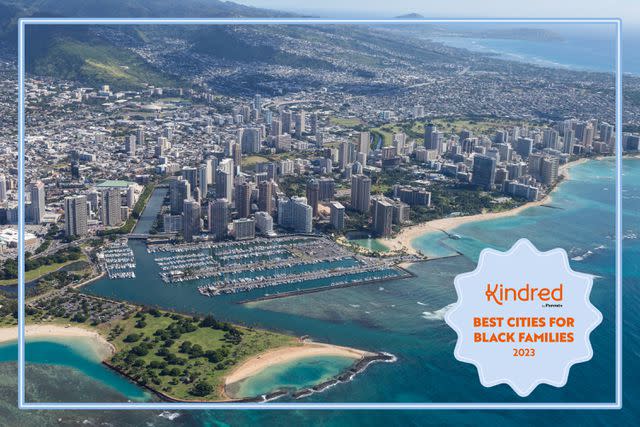
Hawaii Tourism Authority (HTA) / Tor Johnson
Honolulu, Hawaii
Native Hawaiians respect their land immensely. It is a place where water is as valuable as human life and all resources are known to be finite. The state has held an environmental act in place since the early 1970s that requires agencies and individuals to report any issues that might affect the environmental quality of life. While tourism affects the environment, having regulations and care for your surroundings allows Honolulu, the state capital, to be among one of the best cities for overall environmental equity.
Honolulu has the fourth cleanest air in the world according to a 2023 report. But it’s not just a thing to have good stats in environmental categories; maintenance is incredibly important. Insider reports that Honolulu is committed to effective climate sustainability. The city also utilizes public green spaces as community gardens providing less expensive food security options.
In terms of getting around safely and efficiently, a popular tourism website notes that the city bus is inexpensive and reliable. Climate Nexus reports that cities emphasizing public transportation are less polluted as traveling by bus emits 55% less climate pollution than single cars.
Maya Feller of Maya Feller Nutrition, a resident of New York City, believes the environment plays a huge role in health and wellness.
“As a registered dietician, I often think from a holistic lens across the life cycle and feel that social determinants of health have to be taken into consideration when thinking about the quality of life,” she says.
Columbia, Maryland
Columbia, Maryland also boasts tons of public green space and recreational opportunities that support environmental health; however, Honolulu’s pollution ranking makes it a clear top choice in this category.
Washington, D.C.
Washington, D.C. has great offerings of greenspaces with 7800 acres of parkland. It was recently ranked the number one parks system in the U.S. by the Trust for Public Land.
Best for Safety
Safety of Black community members was top of mind when looking at cities. We considered violence, racism, crime, rates of gun ownership, and incarceration. As police violence is a leading cause of death for young Black men, and gun violence is a public health crisis, generally and within Black communities, living and working in safe environments is crucial for Black families.
It’s important to note that deciding which cities were the safest on our list revealed that there are very few places that are safe for Black families in America. In most cities that have significant Black populations, violent crime is a major issue. In cities with lower Black populations, the danger is facing prejudice that makes Black families unfair targets for criminalization or violence in communities with high rates of gun ownership. Making judgments in this category required our experts to think comparatively.
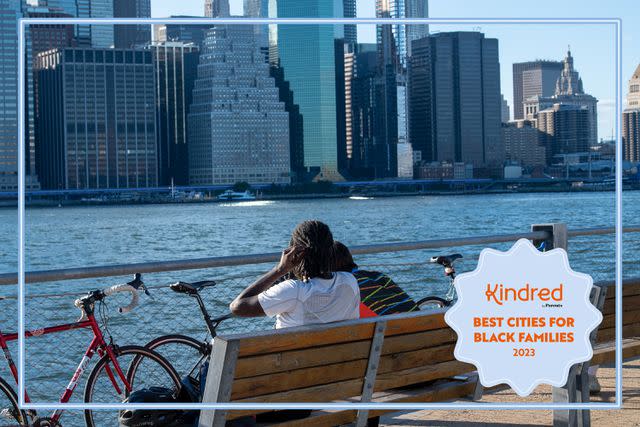
NYC & Company/Julienne Schaer
New York, New York
New York City ranked high in safety among the judges—and it makes sense, even if not on its face. Not only is the city one of the safest big cities in America, according to Forbes and a report by the FBI, but being situated in the Northeast means that the deep-seated history of systemic racism which influences the criminal justice system overtly in the South affects Black families less in New York. Additionally, because crime data is not reported well across the United States*, the experts had hard decisions to make about how that data might be skewed in cities where systemic discrimination is more ingrained.
We know that New York is the home of stop and frisk, the place where the Exonerated Five were wrongly convicted, and the infamous Riker’s Island. But in recent years, the city introduced bail reform, will be closing Riker’s by 2027, and started deploying mental health response teams instead of police to some emergencies in 2021. In many cities with large Black populations, these kinds of reforms are not even considerations.
“Emotional and physical safety, equitable opportunities for socioeconomic advancement to be surrounded by a visible thriving Black community to feel free from police over surveillance and feel free to rear their children in an environment that values children are precious assets,” says psychologist Dr. Alfiee M. Breland-Noble.
Columbia, Maryland
Columbia, Maryland was voted the safest city in America by WalletHub but has a much lower population of Black residents making such safety statistics quite skewed.
Jersey City, New Jersey
Jersey City, New Jersey deserves recognition for its low violent crime rate of 443 per 100,000 people, with an 1167 chance of becoming a victim.
Best for Education
In this category, we looked at the ease of receiving a high-quality, low-cost education. We considered local educational options from early education to higher education, the percentage of Black teachers, if there are any Afrocentric school options, book banning in the area, and the percentage of Black residents who hold advanced degrees.
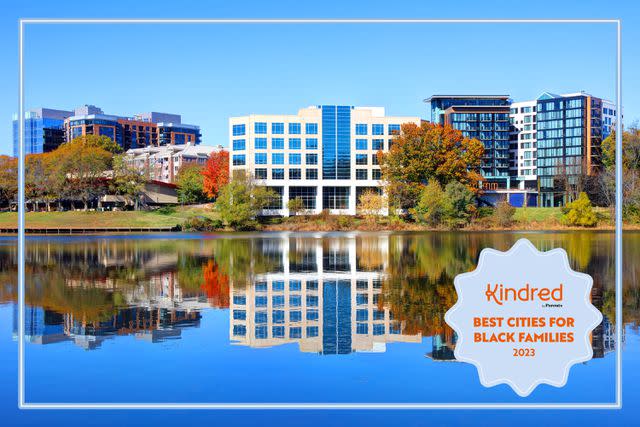
DenisTangneyJr / Getty Images
Columbia, Maryland
Columbia, Maryland might not have snagged our top spot for environmental equality, but it definitely ranked high for education. Maryland is number 12 in state education rankings for 2023, according to Scholaroo. Columbia, which is in Howard County, is considered a part of the larger Washington-Baltimore-Arlington, DC-MD-VA-WV-PA combined statistical area. The region ranks number 3 on Wallethub's most educated cities list. In Columbia, specifically, there are 5 public schools, all holding A rankings. While the city is majority white, followed by 29.8% Black residents, the communities are reported to be quite diverse.
Diverse communities tend to allocate resources more equitably in schools. Studies have shown that when Black students feel represented, they reap more of the benefits of education. While Howard County Schools have overwhelmingly more white teachers, the county is actively working to expand the percentage of Black educators in its public schools, which sits at 10.7%.
Higher education is directly related to wealth building and increased quality of life. Nearly 63% of Columbia residents hold a bachelor’s degree or higher, with 13.1% of that number being from its small Black community. Columbia is home to Howard County Community College, and there are nearly 30 impeccable universities neighboring the city.
Dr. Breland-Noble says that education and representation are major factors that enhance the quality of Black life. When evaluating the cities on our list, she leaned on her knowledge in those areas.
“I [considered] what it means for Black youth to live in environments where they are severely under-represented and what that underrepresentation does to the delicate psyches of young people of color when they do not see themselves reflected positively in adult professionals around them.”
Silver Spring, Maryland
The judges also wanted to recognize Silver Spring, Maryland again, which topped our list for the best city overall, for its great education system.
San Francisco, California
San Francisco, California also has a great, diverse education system but has a much larger population which can limit resources and make way for some inequity in public schools.
Best for Health Equity
Doctors around the country believe that Black patients are capable of withstanding more physical pain and, in turn, provide us with less medication for pain management, according to a 2016 study. That's why it was imperative that we examined the likelihood that Black folks would experience medical racism. These kinds of beliefs manifest as large-scale emergencies like the Black maternal mortality crisis. Black families are also more likely to experience this kind of medical racism when there are fewer providers or providers of color in healthcare and mental healthcare deserts.
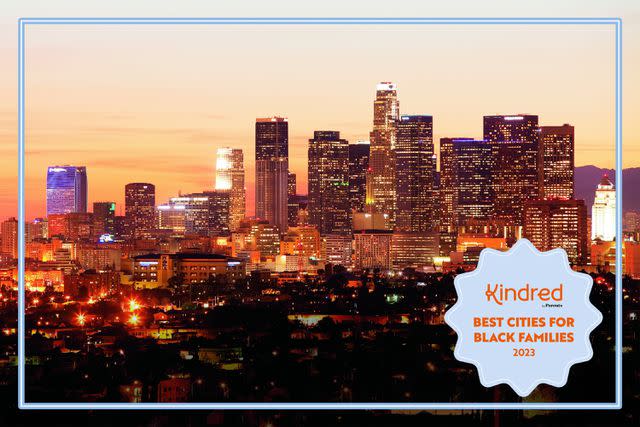
Los Angeles Tourism & Convention Board
Los Angeles, California
Historically, Los Angeles was considered a safe space for Black residents—it was once the great getaway from the blatant racism of other states. Today, the state of California has 151,000 laws in place to support the health and wellness of its residents, 8.6% of whom are Black in Los Angeles. California also had the lowest maternal mortality rate in the country, according to a 2021 report by the CDC.
New York
Feller, a New York City resident, says that high-quality, equitable education, safe and affordable housing, access to full-service grocery stores, and affordable quality afterschool care are key components of a truly equitable city. Her first choice for health equity is where she lives.
“I live in NYC and feel that there are opportunities for Black families to thrive,” she says. “Truthfully, it's a conflicted answer as I often wonder if there is, in fact, a place in the U.S. that takes the breadth of the Black experience into consideration. From a nutrition and health perspective, NYC has some of the best medical talent in the country. Although, there are significant health equity challenges in terms of access to care and provision of care. The hospitals and clinics have top-tier talent.”
Carlsbad, California
Carlsbad, California also made the list because of the low maternal mortality rate across the state.
For more Parents news, make sure to sign up for our newsletter!
Read the original article on Parents.

